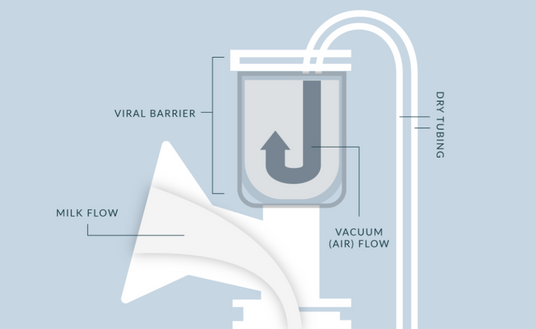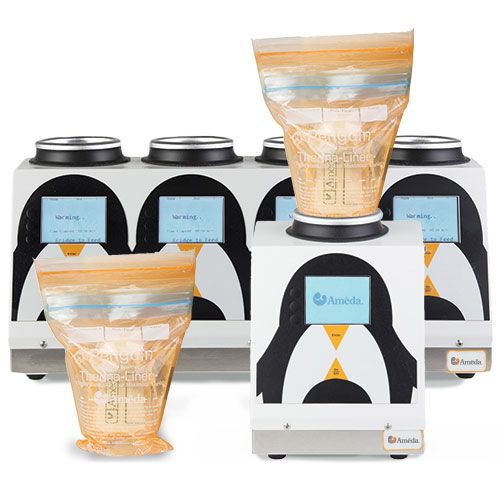
Clinical Evidence
Ameda HygieniKit Milk Collection System
Ameda's HyginieKit milk collection system features the world's only FDA-cleared two-way barrier that protects breastmilk, tubing and pump itself against contaminants like viruses and bacteria. It also prevents milk from back flowing into the tubing preventing dangerous mold growth.
-
Ameda Elite™ Breast Pump
With the Ameda Elite™, milk output exceeds that of breastfeeding mothers by Day 5 and continues to surpass breastfeeding during the critical first 14 days postpartum. Milk output from other pumps either lags behind in the borderline range or barely keeps pace with breastfeeding. When mothers use the Elite, its time-saving features help simplify the clinician's role. These specially designed features equate to a reduced need for valuable staff time throughout the hospital stay.
-
Ameda Platinum® Multi-User Breast Pump
Ameda's Platinum Hospital Breast pump is clinically proven to be the most efficient pump for your most critical patients. OUR Platinum® clinical white paper published in the February, 2013 edition of Advances in Neonatal Care, the official journal of the National Association of Neonatal Nurses (NANN) shares why.

Choice Of Hospitals Since 1942
Ameda Penguin Warmer
THE ONLY WARMER THAT...
- Warms to physiological temperature for proper absorption
- Provides continuous gentle mixing throughout warming as recommended by WHO
- Operates quietly below the AAP noise level for proper neurodevelopment
- Prepares feedings in half the time
| COMPARISON CHART | Ameda Penguin Warmer | Competing Brand |
|---|---|---|
| Warms based on temperature sensor feedback loop | ✓ | |
| Gently mixes while warming, eliminating the need for shaking or rolling | ✓ | |
| Multi-directional, surround warming for a more uniform and even outcome | ✓ | |
| Feedings safely warmed in closed system bag | ✓ | ✓ |
| Warm from refrigerator to feeding temperature | ✓ | ✓ |
| Warm from frozen to thawed temperature | ✓ | ✓ |
| Warm from frozen to feeding temperature | ✓ | ✓ |
| Easy to clean with common hospital disinfectant | ✓ | ✓ |
| Accommodates feeding containers to 27 ml and syringes from 1mL to 100mL | ✓ | |
| Compatible with most makes, models, and sizes of breast milk storage bags, syringes, and bottles | ✓ | |
| Space-saving four wells for pods or nutritional preparation area/rooms | ✓ |
-
Human Milk Warming Temperatures
Human milk handling guidelines are very demanding, based upon solid scientific evidence that handling methods can make a real difference in infant health and nutrition. Indeed, properly stored milk maintains many of its unique qualities and continues to be the second and third best infant feeding alternatives, much superior to artificial feeding. Container type and shape, mode of stirring, amount of air exposure and storage temperature may adversely affect milk stability and composition.
-
Going Beyond Warming Breast Milk
Ameda's Platinum Hospital Breast pump is clinically proven to be the most efficient pump for your most critical patients. OUR Platinum® clinical white paper published in the February, 2013 edition of Advances in Neonatal Care, the official journal of the National Association of Neonatal Nurses (NANN) shares why.
The Ameda Penguin Warmer Advantage
-
Gentle Multi-Directional Warming
360° surround, even, gentle warming to ideal temperature range.
-
Closed System
Patented "Bag-in-Bag" closed system designed to prevent contamination.
-
Efficient Heat Exchange
Leverages thermal transfer properties of water - the most efficient and controlled method for heat exchange.
-
No Shaking Needed
Gentle vibrating technology mixes feedings throughout the warming cycle.

